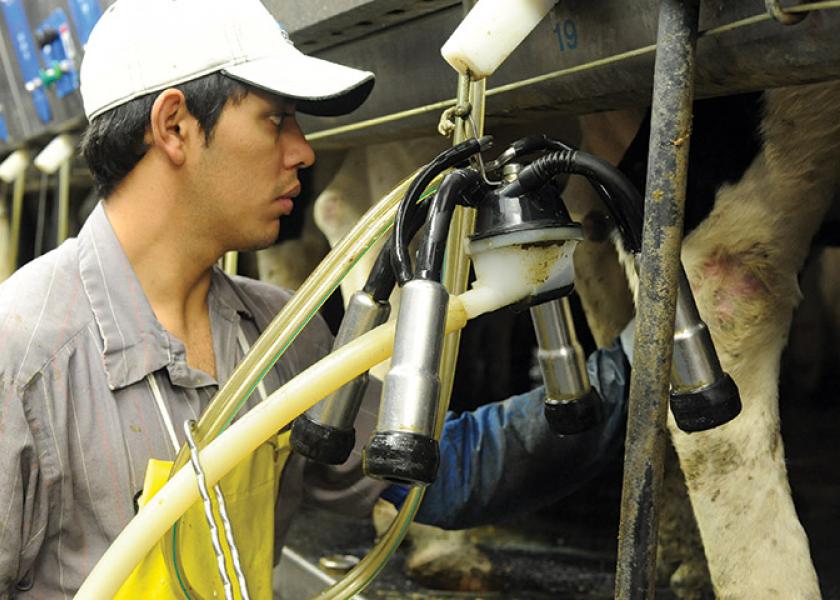Parlor Practices that Successfully Manage Mastitis

What percentage of dairy producers do that prep step that in the parlor? Does it really have relevance to improved Somatic Cell Count? What separates producers of high quality milk from their peers?
By: Phil Durst, Michigan State University Extension
Dairy producers follow a scripted routine, day-in and day-out. That is especially the case in regard to practices in the parlor that are repeated two or three times every day. Thus, there are two questions that may be in the back of the minds of dairy producers; 1) How many of my peers do these practices? and 2) Is it important to continue doing these practices?
Answers to these questions came to light through a "Survey of Mastitis Management on Dairy Farms" completed by dairy producers in Michigan, Pennsylvania and Florida in early 2013. The survey was developed as a part of a research study by Michigan State University Extension, Penn State University Extension, Florida A & M University and Mississippi State University. A total of 660 dairy producers (41 percent response rate) returned the survey. Some of the things that we learned from the survey are listed below.
Producers were asked to respond yes or no about certain parlor practices:
- 86 percent disinfect teats (pre-dip) before milking
- 57 percent wear gloves when milking
- 34 percent massage teats (other than stripping) before milking
- 89 percent use separate towels for each cow
- 93 percent disinfect teats (post-dip) after milking
- 22 percent use water in the prep of cows for milking
Many of the practices above involve long-standing recommendations by university and industry professionals and yet it is obvious that adoption by producers is not universal.
In the survey, producers also reported their bulk tank somatic cell count (SCC), therefore, practices can be correlated with udder health as reflected by SCC. This is what the data tells us.
- Pre-dipping was positively correlated with lower SCC
- Post-dipping was positively correlated with lower SCC
- Wearing gloves was positively correlated with lower SCC
- Use of water or washing teats was negatively correlated with lower SCC
Not only does the research on these practices tell us what is effective in reducing mastitis, but so too, do the results on farms where they are practiced. For those not implementing the recommended practices, the question is why?
One answer sometimes given is that adding a step (ie. pre-dipping or forestripping) would add extra time in the parlor. However, proper prep of the cows actually reduces the time spent milking because the cow lets down her milk before the milking unit goes on. In addition, good prep reduces the time that otherwise is added to deal with increased mastitis cases.
Something else that was correlated with lower SCC on the farms responding to the survey was the level of importance given by owners to recruiting, retaining, training and motivating employees. On many farms, employees are the key personnel who milk the cows. Therefore, it was not surprising that when dairy owners place greater importance on having employees that consistently implement good milking practices, they had a lower SCC.
The level of importance by the owner is communicated to his or her employees through a regular appearance in the parlor during all milking shifts. Taking the time to observe the work of employees, commend positive actions and correct negative ones, will provide positive results in cow udder health.
One other finding that impacts udder health is the owner’s attitude about mastitis. Owners who take responsibility for udder health achieve better udder health, whereas those who blame mastitis on external factors including "bad luck" have higher SCC.
Employees will not be more motivated to improve udder health than what they perceive management to be. Consistently emphasize udder health and the steps necessary to achieve it.
The survey of mastitis practices reminds us that those who achieve the greatest success have some common characteristics including attitudes and actions that keep everyone doing what is best for the cow and together fighting this costly disease.







